When I analyze my trades in the last 12 years, the majority of them came from technical formations. So, whenever someone asks me, “Do you trust chart patterns?” I would instantly say, “YES.” And if you asked me what formation I wouldn’t be able to live without, I will say TRIANGLES.
How can other traders say it’s subjective or tell you that Triangles are not working anymore? I can tell you right away. It’s bullshit, and I’d try to convince you why you must learn and use the simple Triangle formation if you want to dominate in 2021!
Why Should You Learn Triangle Formations In 2021?
The Triangle chart pattern is the most straightforward and most seen formation for most traders. The reason for that is easy: According to a few studies we have done in recent years, the chance of the Triangle pattern forming when the market is consolidating (moving sideways) is around 67.8%. The probability of trading breakouts can be higher than 75% if everything aligns. So yes, if you follow simple rules and confirm the formation, the chance of success can be high!
Now, that you know why Triangles still grab my attention, let’s get straight into more specific details that you must know.
Triangle Chart Formation Rules
Simple technical analysis has many techniques and rules about Triangles, but the only Triangle I trust would be a simple five-leg Triangle. However, before we get further, one thing must be clear; the Triangle appears in the middle and ending stages of the trend. Therefore, it can be a good clue that the market will resume the more significant trend (simple term, the Triangle is a continuation pattern).
For a Triangle to be valid in my eyes, the pattern must contain five legs where each leg is shorter than the previous one.
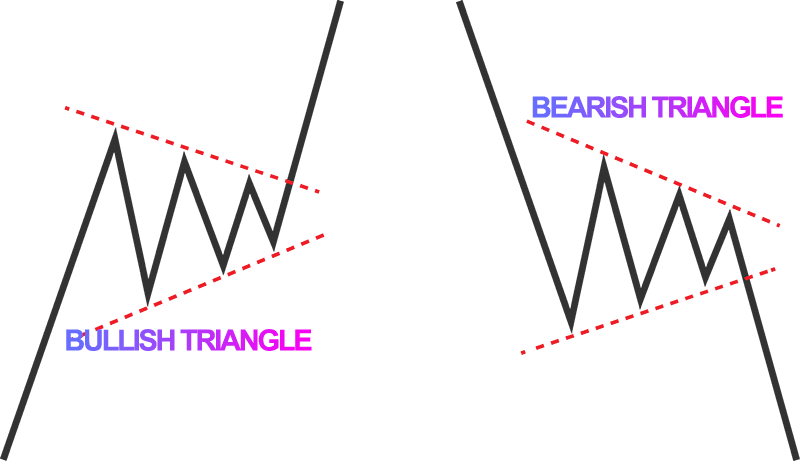
As you can see in the image above, the first Triangle leg is the biggest, and each Leg is shorter than the previous one. If you want to have clear rules, you can write down this:
2nd Leg must be shorter than 1st Leg
3rd Leg must be shorter than 2nd Leg
4th Leg must be shorter than 3rd Leg
5th Leg must be shorter than 4th Leg
Here are a few charts where you can see how five-leg Triangles look on the actual chart: pay attention to where I’m drawing the formations.
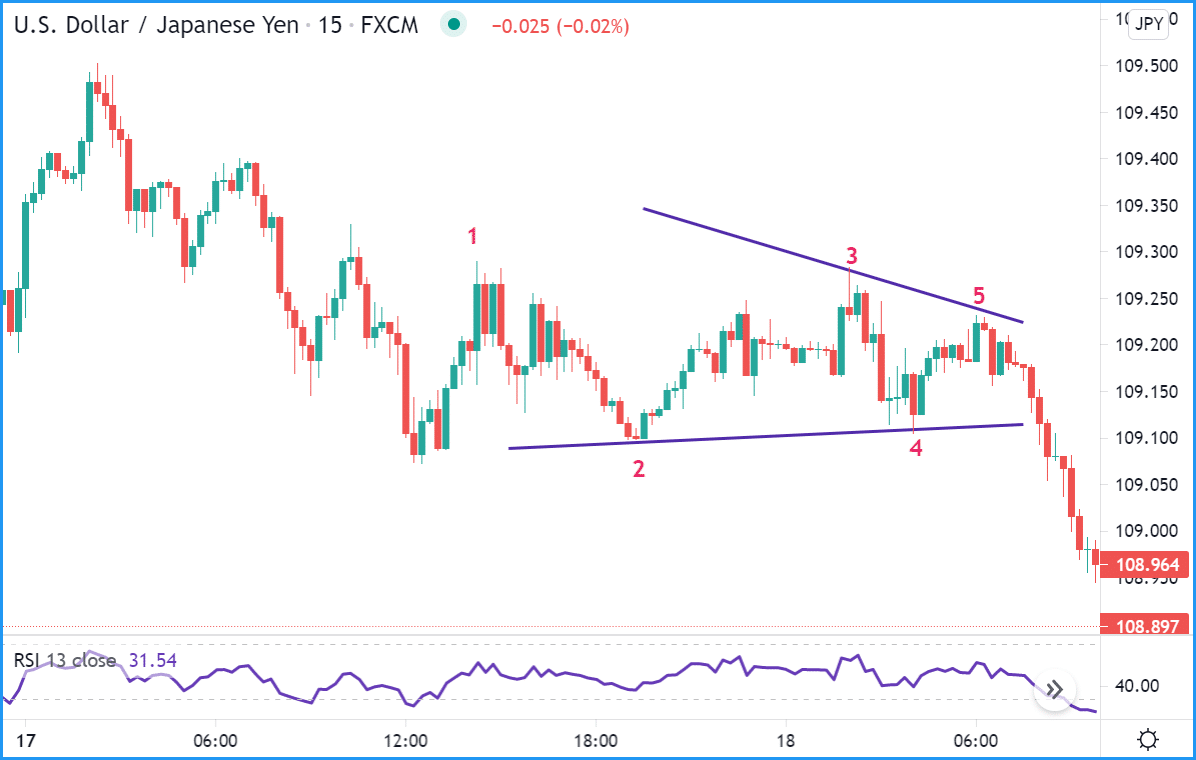
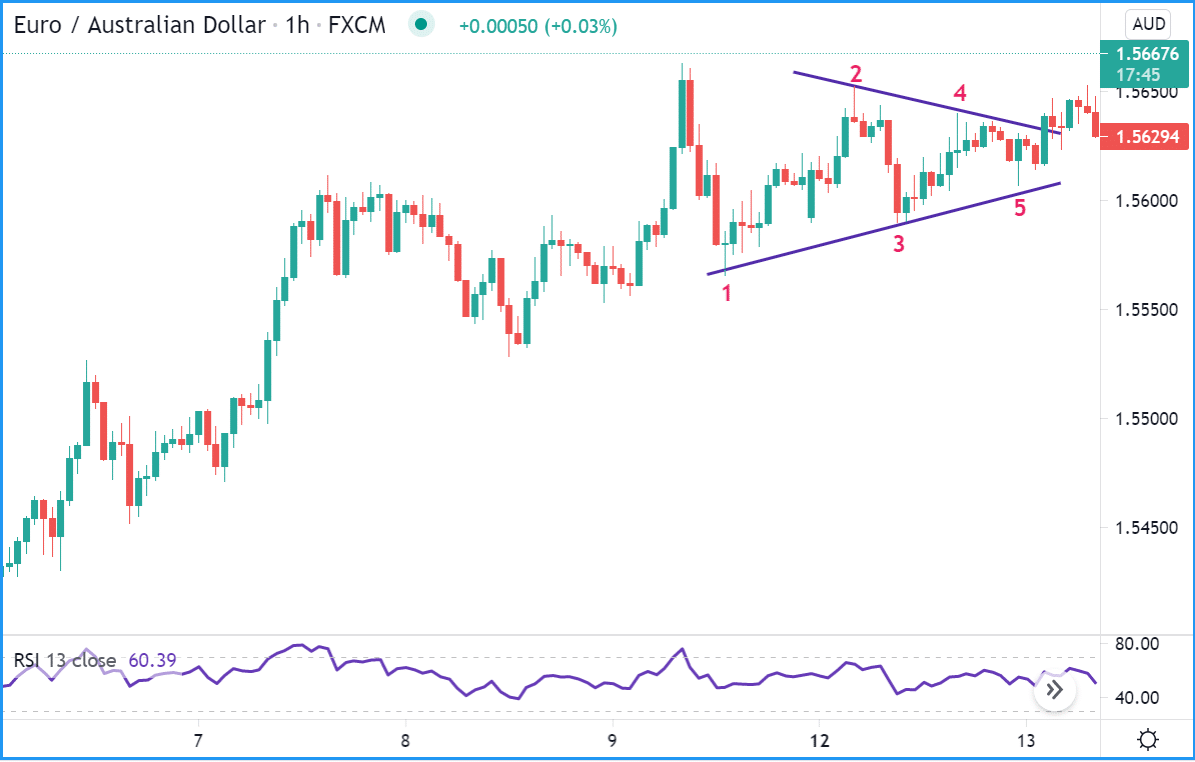
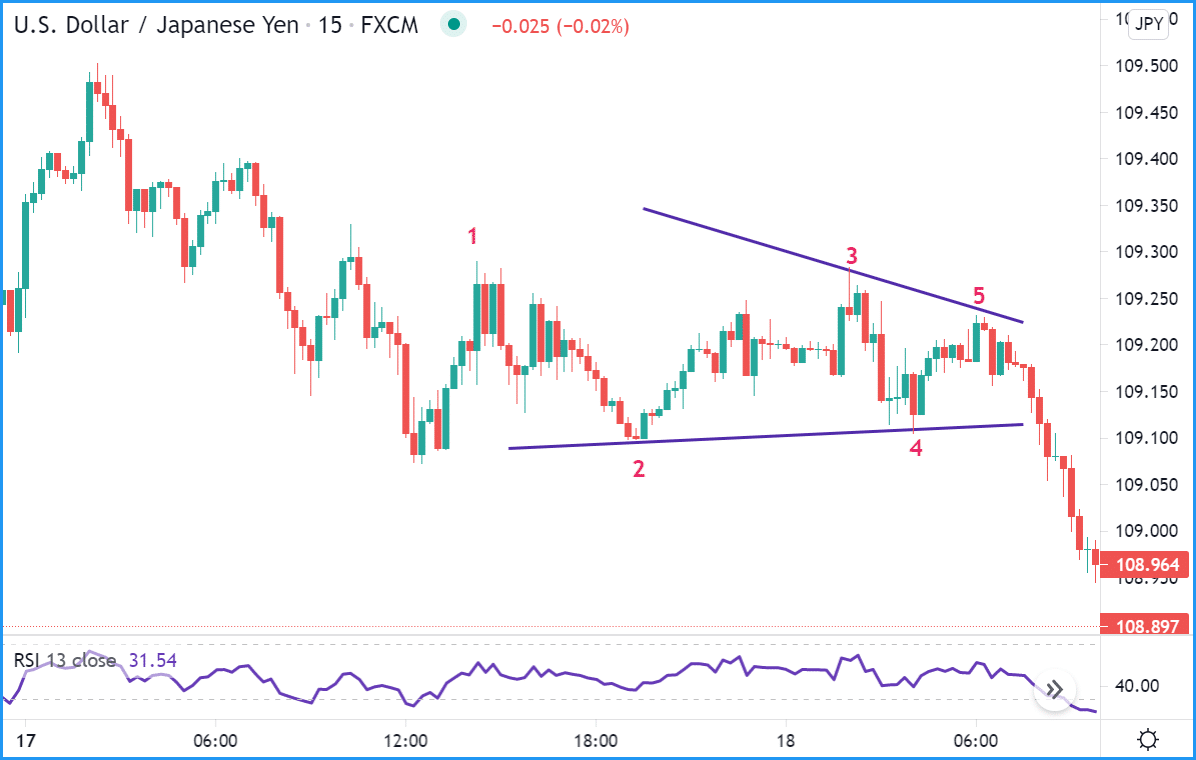
The examples below are something I don’t want you to even think or consider as the Triangles, and I will put them here since most new traders make that mistake.
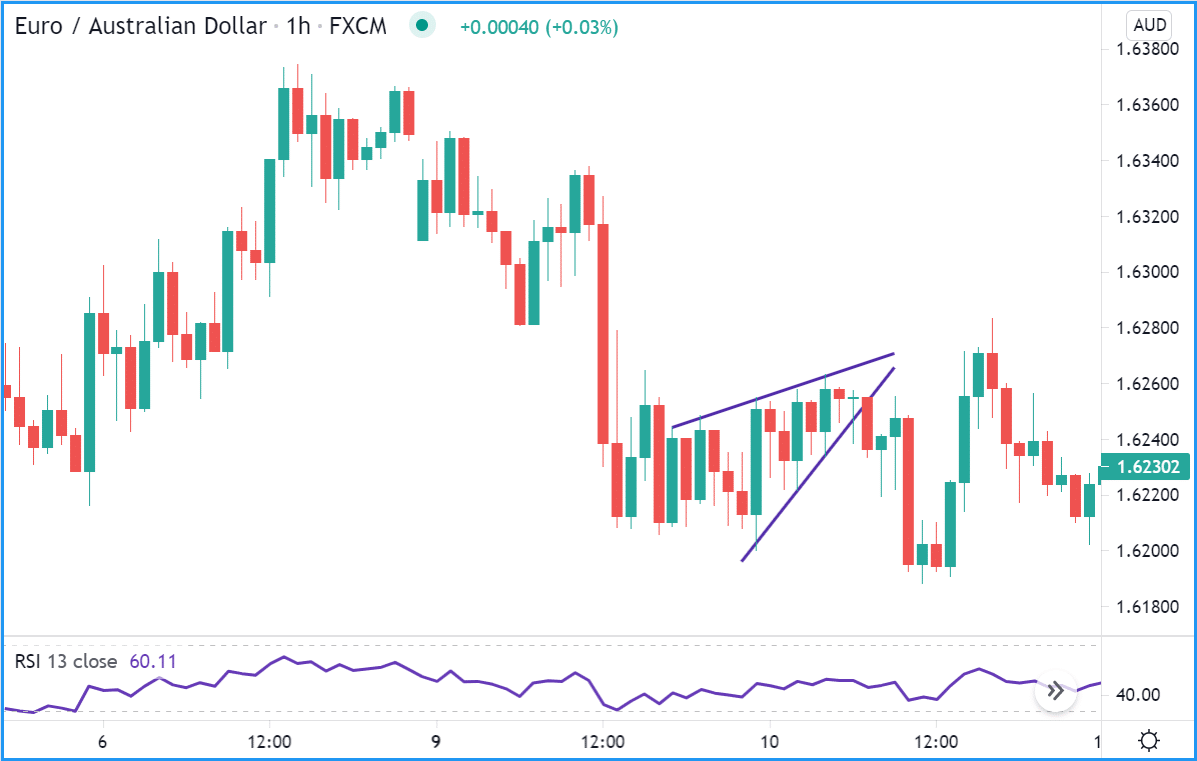
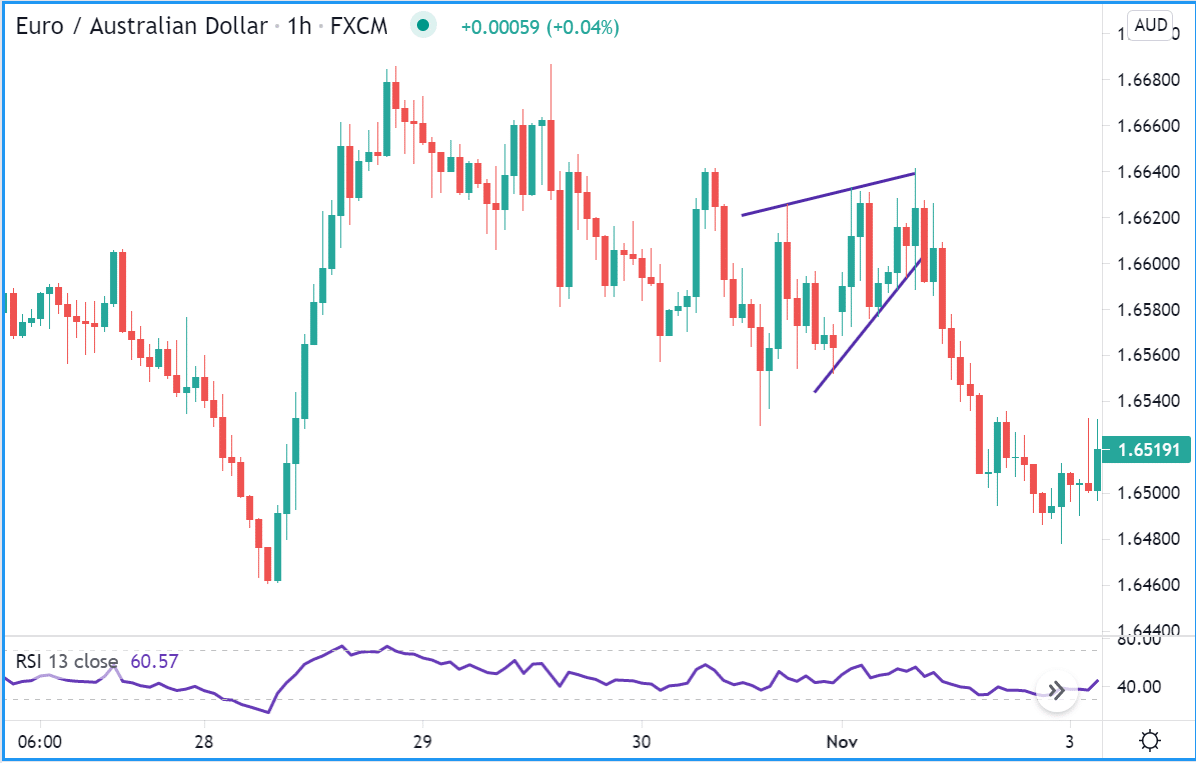
Yes, those formations are not Triangles, and you should never consider trading them as such!
If you want to learn a little bit more about different formations, I suggest watching my short video below.
Quick Triangle Confirmation
After spending a lot of time trading this pattern, I have seen and tried a lot of different methods that can be a good confirmation for Triangles. if I had to pick the best, I would go with the Elliott Wave approach to Triangles and look that each Triangle leg consists of a smaller 3-wave move. Still, since that’s hard for most people, I suggest you use the RSI confirmation method.
So, all we need to do is load a basic Relative Strength Index with 13 Period as settings (it doesn’t matter what settings you use, but for years I used 13, so you can copy that) and try to see if you can spot Triangle on RSI at the time you see the formation on the chart. If you can see the same thing, the chance of you seeing correct formation increases around 10-15%.
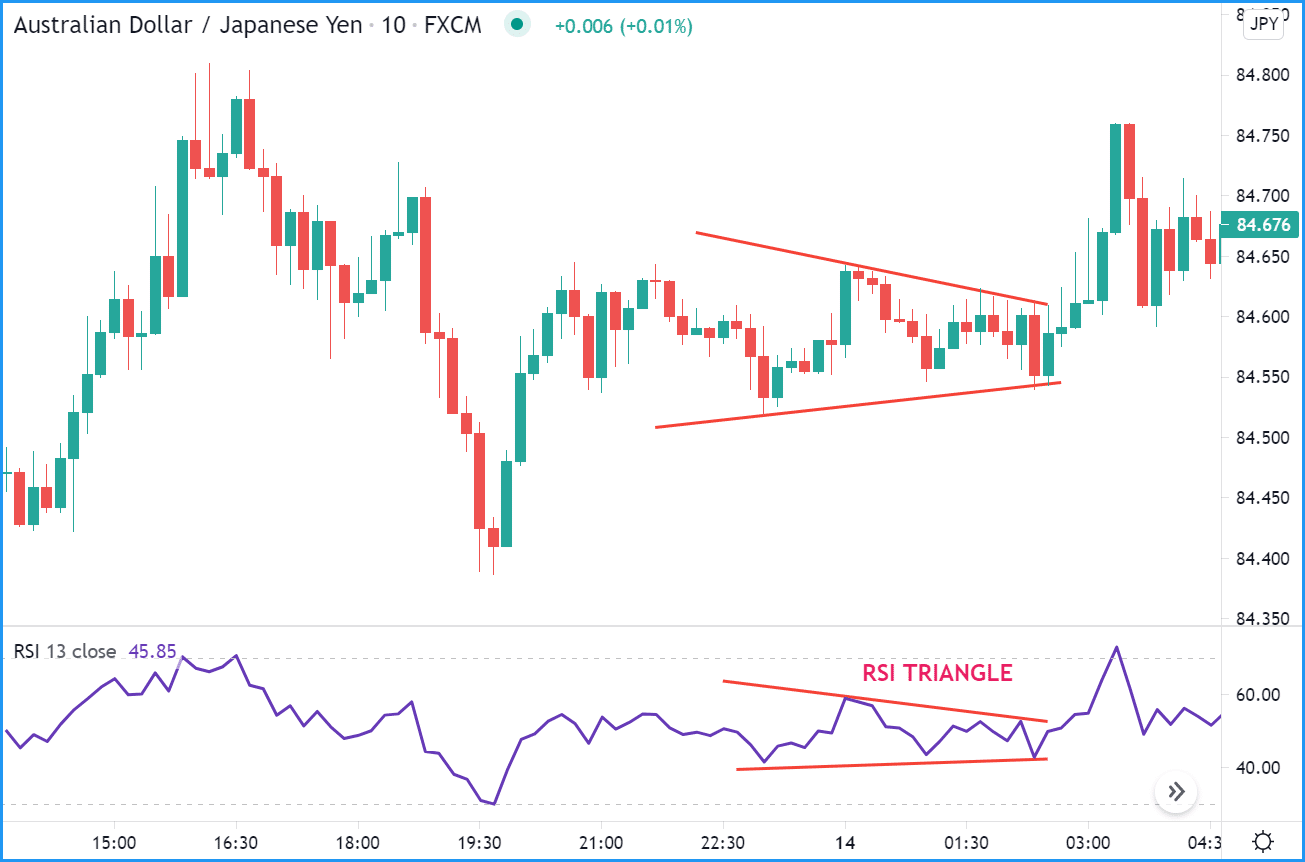
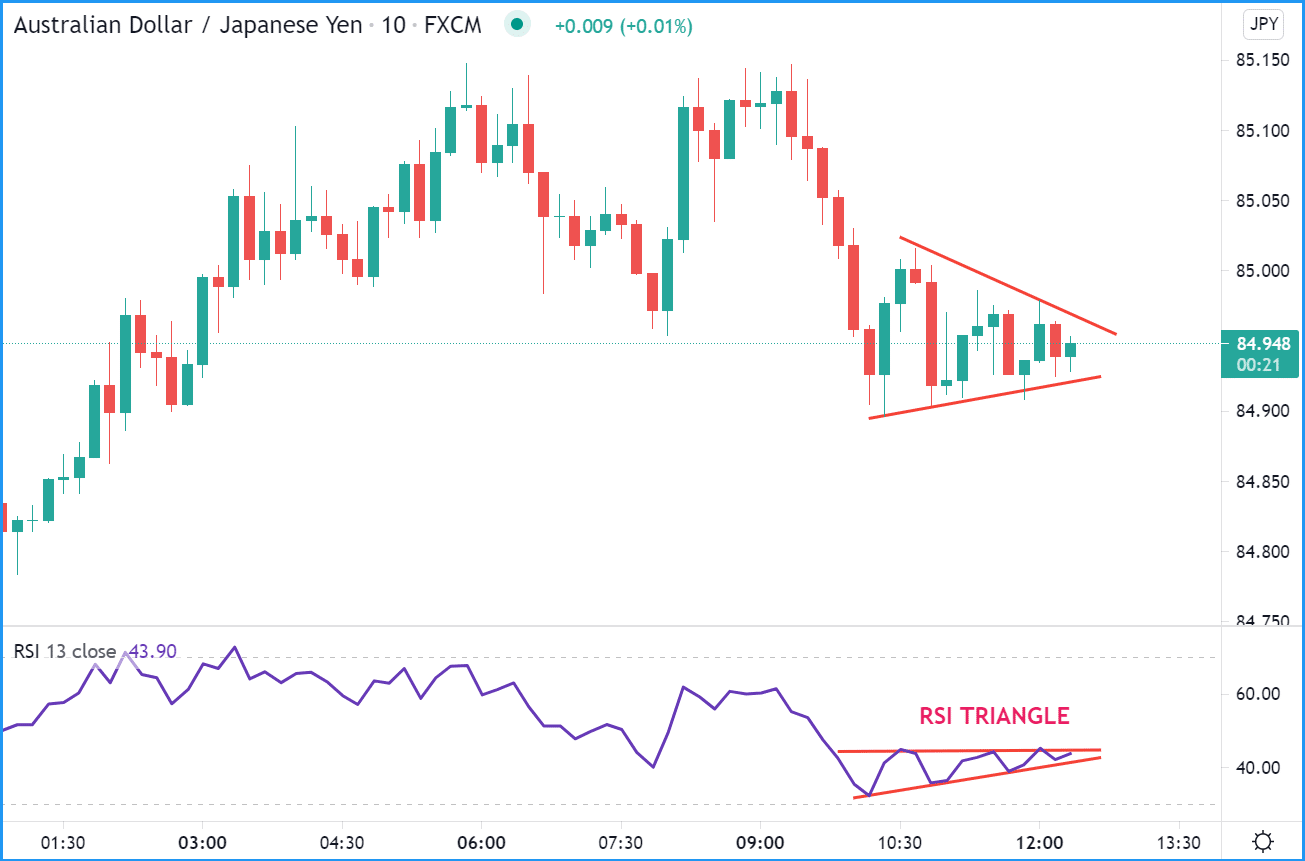
As you can see on the images above, everything is relatively easy; It can take a few tries at first, but trust me. This RSI method helped me a lot in my trading (I still check all Triangles with this method for additional confirmation).
Easy Game Plan for Trading Triangles
We already said that Triangles are continuation formations, so our goal is to trade the more significant trend when we spot this pattern.
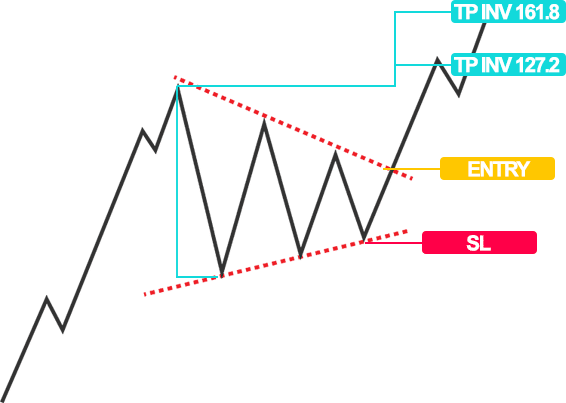
Entry – Triangle Breakout (drawing trend line between ending points of 2nd and 4th Leg)
Stop Loss – Ending Point of 5th Leg (you can add few pips for spread)
Targets – We want to use inverse 127.2 and 161.8% of the largest Triangle leg (use fibo tool)
Invalidation – Break of the rule 5th leg must be shorter than 4th Leg
Minimum Risk: Reward – I would go with 1:2 as minimum RR for a start, just to prevent losses until you get it right and start seeing proper Triangles all day long.
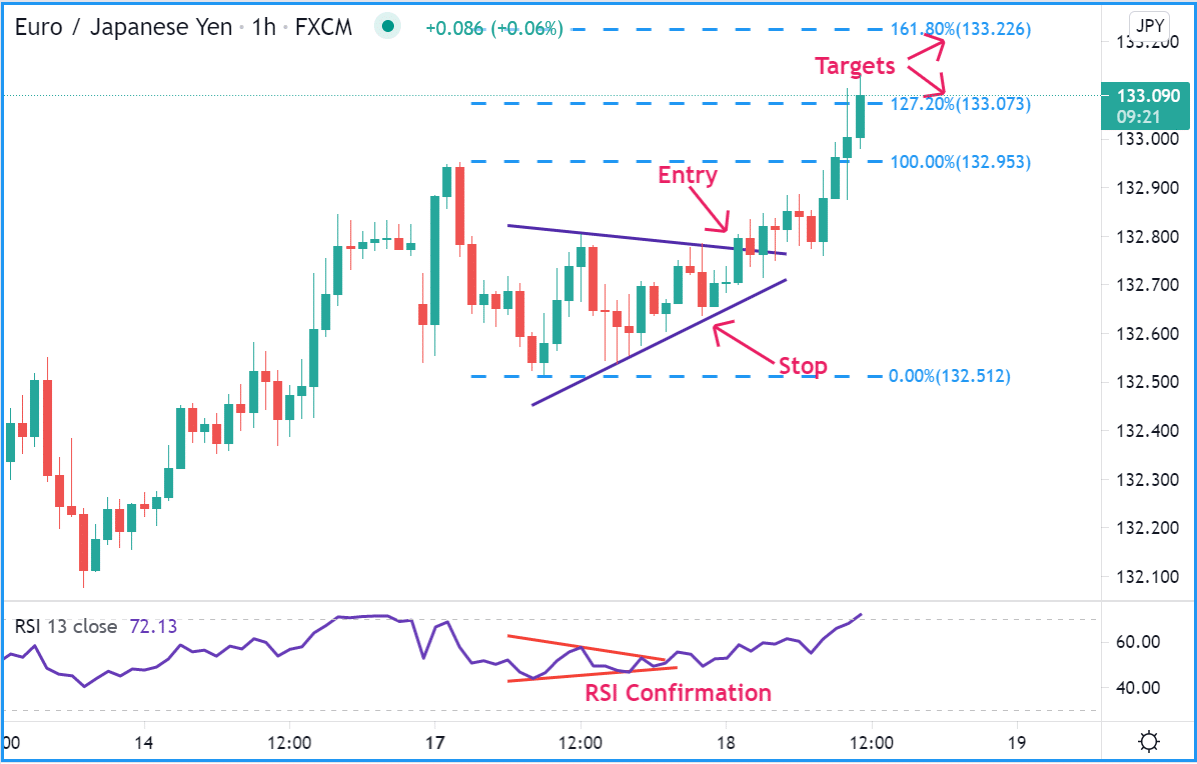
This simple approach will work on all asset classes (Forex, commodities, cryptos, stocks, indices…) and all timeframes (from M1 to Yearly charts).
Conclusion
Few rules, easy to find, and good profitability makes the Triangle pattern the best of all right now.
Your only job is to practice spotting the formation for 5-10 days. Try spending few hours each day and go back in history labeling 100-200 formations every day. The more formations you spot, the easier it’s going to be in the future.
Just don’t overcomplicate your trading; follow good risk management, and you are going to be more than happy with the results.
Let me know down in the comment section if you have any helpful tips for other readers on trading Triangle formations.
Enjoy your trading day,
Nicola
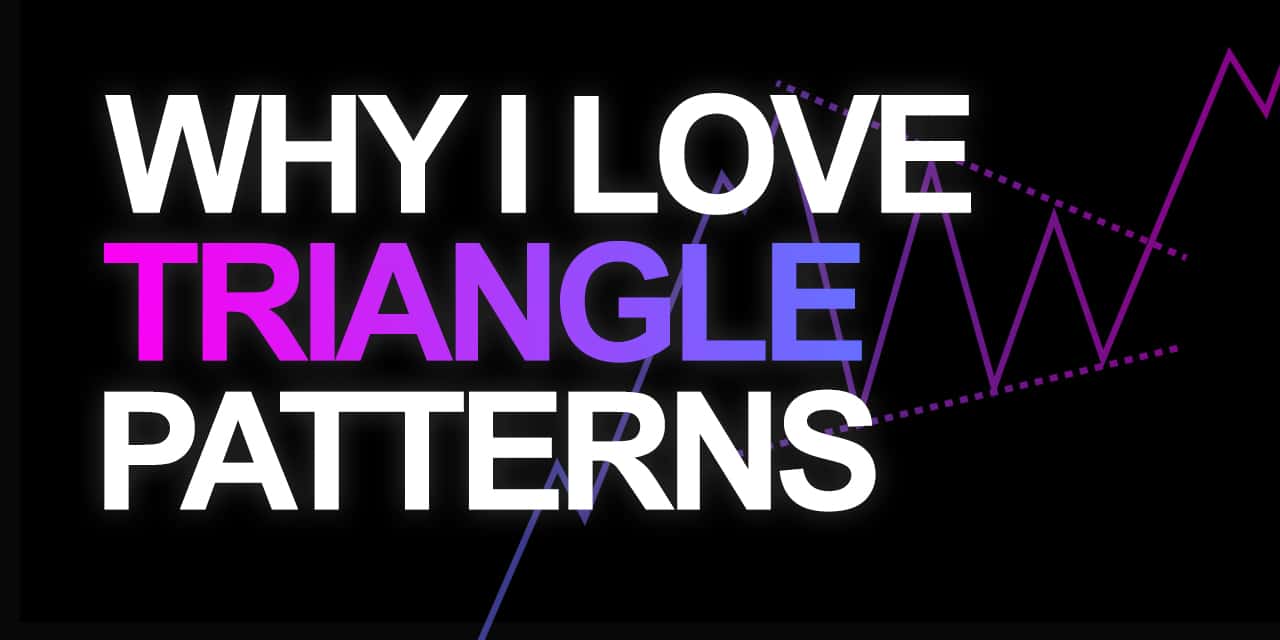



0 Comments
Trackbacks/Pingbacks